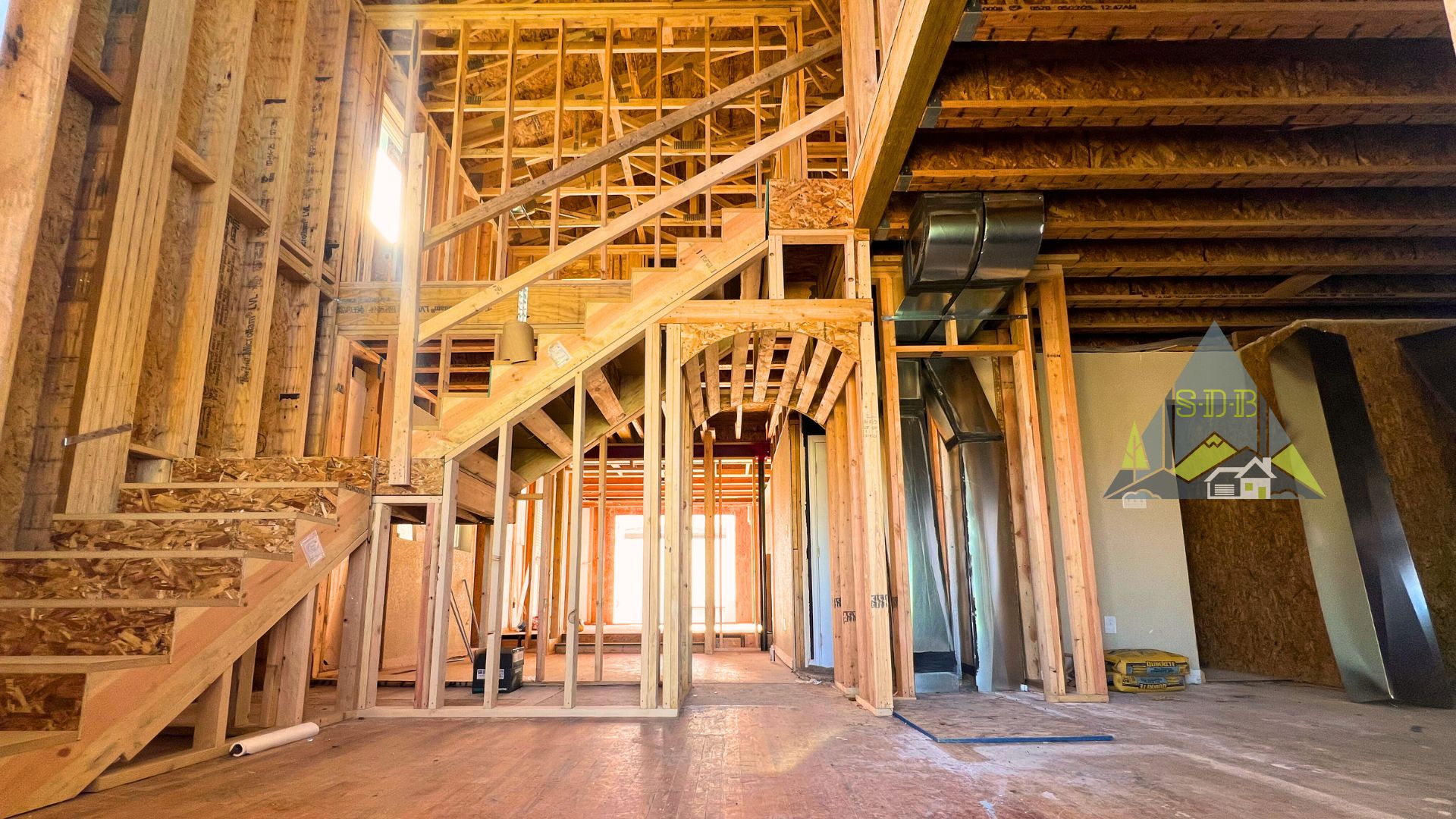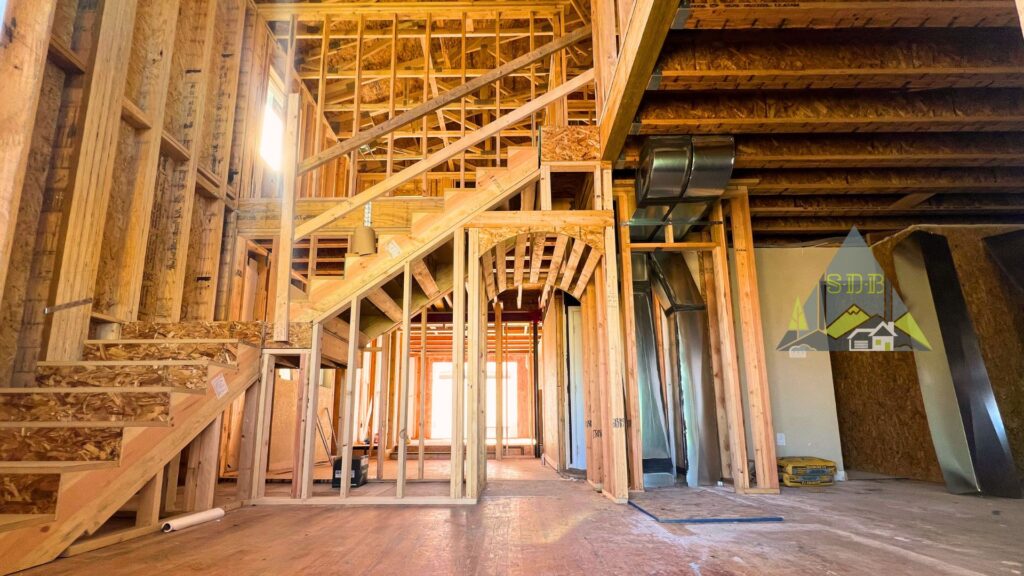
Beginning the residential design phase during a quieter construction period gives homeowners more room for creativity, clearer budgeting, and better access to materials and professionals. By starting early, homeowners can refine their ideas, plan strategically, and be fully prepared when construction demand rises again.
Thinking about a custom home or a thoughtful whole home renovation? There may never be a more advantageous time to begin the design process. During slower construction cycles, homeowners gain increased flexibility, improved pricing opportunities, and the chance to plan with intention. Sustainable Design Build (SDB) often advises clients to begin design early, since thoughtful preparation can reduce stress and elevate the final outcome when construction is ready to begin.
This period of lower industry activity creates valuable space for creativity, strategic planning, and deeper collaboration. With construction costs fluctuating and permitting timelines extending in many Colorado municipalities, early design work provides homeowners with a strong foundation for success.
Table of Contents
Is Now the Best Time to Begin Your Home Remodel?
Taking Time to Refine Every Detail
A More Organized and Predictable Process
Staying Ahead of Market Conditions
Better Deals, Better Materials, Better Availability
Greater Cost Control and Financial Transparency
A Roadmap to the Architectural Design Process
The Bottom Line: Start Now, Benefit Later
Design Now, Build Smart Later
When construction slows, homeowners can focus on design without the urgency of immediate construction expenses. In most projects, early schematic design represents only a small fraction of the overall budget, yet it sets the tone for every decision that follows. According to industry insights from Forbes Home and Houzz, early planning is one of the strongest predictors of reduced change orders and better alignment with long-term goals.
Beginning design during a calm season allows homeowners to explore a wide range of possibilities, evaluate functional needs, and develop a clear vision before construction pricing begins.
Taking Time to Refine Every Detail
The best residential design outcomes come from a thoughtful, unhurried process. When planning is rushed, homeowners often face compromises, unexpected costs, or decisions that fail to support their lifestyle. By assembling the design team early, homeowners gain more opportunity to evaluate architectural ideas, test materials, and refine layouts long before construction begins.
This period of exploration strengthens the project and usually leads to fewer revisions when drawings advance into more technical phases. Since later changes can become costly, slowing down the design experience can create meaningful financial and creative advantages.
A More Organized and Predictable Process
Experienced architectural and construction teams can execute projects efficiently, but early planning offers advantages that accelerate the entire journey. Starting design during a slower season allows homeowners to:
- Clearly outline the project goals and scope
• Break the work into manageable phases
• Develop specifications with confidence
• Review materials and lead times without pressure
This organized foundation gives general contractors, interior designers, and trade partners better clarity as the project develops. SDB routinely sees smoother construction experiences and improved predictability when design begins well in advance.
For readers wanting a deeper overview of how the full design process works, SDB provides additional insights on its site, including their detailed guide to ADU construction and other residential project types.
Staying Ahead of Market Conditions
Beginning design early positions homeowners strategically as market conditions shift. When demand rises and construction activity accelerates, homeowners with completed drawings can move quickly into permitting and contractor pricing. This advantage shortens timelines and ensures they are ready when more favorable pricing or availability emerges.
In Colorado communities, permitting can take weeks to months depending on location. Some jurisdictions face even longer queues. Homeowners who have their drawings ready can submit proactively and avoid delays that may impact construction start dates.
Better Deals, Better Materials, Better Availability
In quieter market periods, vendors and suppliers often offer stronger pricing to move existing inventory. This provides homeowners with more choices and the leverage to compare products, negotiate pricing, and source higher quality materials.
Because availability is greater and competition is lower, homeowners may find opportunities to upgrade finishes or invest in special features that might be harder to secure when the market becomes busier.
Greater Cost Control and Financial Transparency
Early architectural design creates a staged approach to financial planning. Homeowners can understand costs in digestible phases and evaluate each step before moving to the next. Since design fees are proportionally small relative to full construction budgets, front-loading this phase becomes a strategic investment.
With more time to plan, homeowners can better manage contingencies, evaluate scope options, and review bids with a clearer understanding of materials, labor, and timelines.
More Creativity, Less Stress
Designing a home should feel rewarding. When homeowners are not racing against construction pressures or market surges, the creative process becomes more enjoyable. This is the ideal time to visit showrooms, explore styles, talk with architects, and discover new ideas.
A relaxed pace supports clearer decision making and fosters a collaborative environment where homeowners can visualize possibilities and build confidence in their choices.
A Roadmap to the Architectural Design Process
Although each residential project is unique, most follow a consistent structure:
Initial Consultation: Discuss goals, vision, and overall budget
Schematic Design: Develop conceptual layouts and major ideas
Design Development: Refine materials, elevations, and systems
Construction Documents: Prepare technical drawings for permits and pricing
Pricing and Bidding: Review contractor proposals and evaluate options
Permitting: Submit drawings to the appropriate building department
Construction: Begin building at a time that aligns with goals and market conditions
Planning early allows each phase to unfold with greater clarity and less pressure.
The Bottom Line: Start Now, Benefit Later
Beginning a residential design project during a slower market is not only strategic but often transformative. Homeowners gain access to better pricing, more thoughtful planning, clearer financial management, and a more enjoyable design experience. When the market heats back up, those who planned ahead will already be prepared to build with confidence.
For homeowners considering a custom home, major renovation, or addition, SDB welcomes the opportunity to help explore the next steps. A complimentary consultation can provide clarity on timing, feasibility, and design direction.
If you’d like, I can tailor this article to a specific project type, such as pop tops, additions, or ADUs.
Connect With Us
Planning your next renovation, or maybe you are looking to do a complete remodel for your home? Whatever the task, it can’t hurt to ask. Reach out to our team through this form.
We can schedule a free consultation and discuss everything you need to get your project moving in the right direction. Did we mention, it’s absolutely free?
